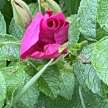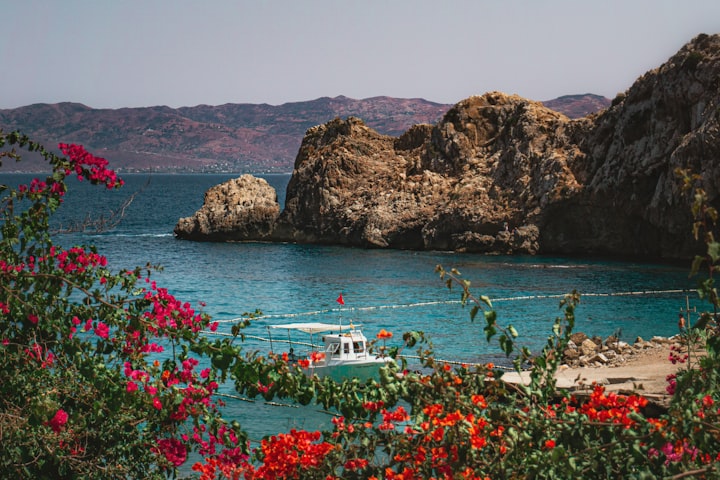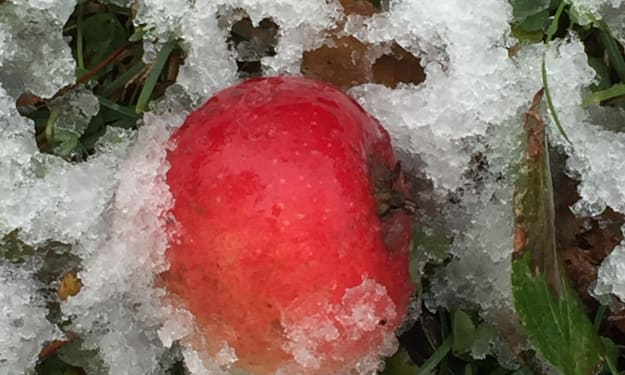H.D.'s Imagism Through A Horticultural Lens
A Non-Poet's Poetry Analysis
Imagism in Modernist literature, specifically poetry, takes a visual and puts it into language that gives the reader a very specific view of the picture the writer is portraying. H.D. (1886-1961) was an American writer who penned numerous poems following the modernist imagism approach. This paper will explore a number of those poems that are titled with the indication that they describe flowers by the sea/water. These poems will be examined from a horticultural perspective and evaluated by their descriptive elements to determine if the poems accurately portray the plants which they are named for: “Sea Rose”, “Sea Lily”, “Sea Violet”, and “Sea Poppies” all speak of the plants in simple terms. Further discussion of these poems will be geared more toward the accuracy of the descriptions in relation to the specific plants named. This is not always about the literary aspect of the writing but rather about the images it inspires.
“Sea Rose” appears to describe Rosa rugosa which is also called seaside rose or beach rose. The first stanza does work to describe them. The first stanza is accurate: “Rose, harsh rose,/marred and with stint of petals,/meagre flower, thin,/sparse of leaf,” R. rugosa are "meagre" in comparison to the long-stemmed roses most people would think of. They survive in harshness and have five thin petals openly arranged. They aren’t “sparse of leaf” - but maybe the particular plants H.D. was describing were. R. rugosa are not native to the United States. They are now known to be quite invasive, but they would have been “more precious/than a wet rose” at the time H.D. was writing as they were exotic and just being introduced (they were first brought to the United States in 1845) Essentially, whether H.D. knows it or not, she is describing a plant that is struggling to gain footing in an unfamiliar environment, but is perfectly capable of doing so. They sound quite lovely and almost sad from this telling. But they are very thorny and not at all the delicate, frail plants that these words would imply. What appears to be “caught, flung, and lifted” is more accurately hardened as these roses were once used to control erosion by providing the stability the dunes needed to not be driven away by the wind. Obviously, it is unlikely H.D. would know this and to her they appeared fragile and wind tossed.
A “Sea Lily” isn’t a flower at all, it is a marine creature that is anchored to the ocean floor by a stalk. It wouldn’t survive out of the water, yet it could have existed close enough to the shore that it would be observable. That said, there is no plant that fits the description and location that H.D. provided, so this will be approached from a literary angle. The poem mentions that: “sand cuts your petal” which would certainly indicate a flower rather than an underwater creature. The words in this poem mirror the previously mentioned “Sea Rose” in the sense that the wind is bringing some manner of destruction to these plants. They are “shattered, dashed and slashed,” sometimes the wind drives the sand against them in some abrasive way. Yet here, these plants “drift upon temple-steps” instead of being “caught in the drift” like the sea roses. They “are shattered/ in the wind” instead of being “lifted/ in the crisp sand/ that drives in the wind.” This poem also mentions “Myrtle-bark” which can be accounted for with the previously mentioned temple-steps as myrtles are spoken of in the Bible as trees of promise (Isaiah 55:13). There is the mention that: “scales are dashed” yet lilies have smooth stems, “scale” is a pest that infests plants. Again, a factor likely unknown to H.D. Yet the overall effect is of a plant that is at the mercy of the environment, the only hopeful words being that they are “lifted up.” Also, the final lines are somewhat confusing:”Yet though the whole wind/slash at your bark,/you are lifted up,/aye—though it hiss/to cover you with froth.” Froth is usually used to describe the water, which could imply these sea lilies are the water creatures originally considered. However, the rest of the words have been about the wind which would not impact an underwater organism the way H.D. has described. Not to mention there is reference to the sea lily’s “bark” which would only be on a tree, further obscuring the type of plant being described.
“Sea Violet'' appears more resilient in the face of the wind. Viola lanceolata commonly known as Bog White Violets or Lance-leaf Violets are likely being described here as they are the only white violets that would grow on a beach: “lies fronting all the wind/among the torn shells/on the sand-bank.” They grow close to the water in a variety of settings and they spread by runners as well as seed. There is the mention of blue violets away from the beach, but the descriptive focus is on the white ones: “but you catch the light—/frost, a star edges with its fire.” They are five petaled flowers and so a star is accurate, a number of them in a patch would be both accurate to their growth habit and would appear as frost. This description does inspire an image of the plant enough that it is easy to determine what it is. It is unclear, however, how they can be both "fragile as agate," which seems to imply they are tough as stone, but later their "grasp is frail." These are not plants that are out of their element, so to speak, V. lanceolata grow in especially wet locations whether coastal, swamp, or near creeks/brookes.
“Sea Poppies” is about Glaucium flavum commonly known as Yellow Horned Poppy or Sea Poppy. It grows on the seashore which is clearly where the plant H. D. described is located: “among wet pebbles/and drift flung by the sea/and grated shells/and split conch-shells.” This plant is beautifully described in the first few lines. The “amber husk” describes the center, “fluted with gold” describes the somewhat ruffled petals. That description is accurate and they are easily visualized even if you aren’t familiar with the plants themselves.While we are back to the sand/beach, the wind is not abusing these flowers. They are at home in this space and thriving. They are allowed to be what they are without opposition or apology: “Beautiful, wide-spread,/ fire upon leaf” implies they are in control of the space. “Treasure/ spilled near the shrub-pines” renews the gold imagery. The “shrub-pines” implied to be growing seaside could describe Pinus contorta commonly called Shore Pine or Lodgepole Pine. This further illustrates the environment G. flavum is found in. Where the “stalk has caught root” it is not flung, grated, and split, as in previous entries, quite the contrary, these “Sea Poppies” seem to belong in their habitat. The previously explored poems put the plants as the weak aspect of the landscape. This poem didn’t feel like words being rearranged to basically say the same thing: sand, wind, plant. This particular poem gave life to the subject in a way the others did not.
Works Cited
D., H. (2016, August 16). Sea Lily. Poets.org. https://poets.org/poem/sea-lily
D., H. (2019, April 25). Sea Poppies. Poets.org. https://poets.org/poem/sea-poppies
D., H. (2020, October 26). Sea Rose. Poets.org. https://poets.org/poem/sea-rose
D., H. (2016, January 15). Sea Violet. Poets.org. https://poets.org/poem/sea-violet
About the Creator
Rebecca Tkacs
Eclectic interests allow one to view the world through many lenses: theological/spiritual, historical, sci fi/fantasy,scientific studies and more have influenced the work presented here.







Comments
There are no comments for this story
Be the first to respond and start the conversation.